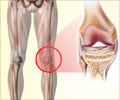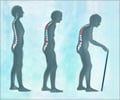- Living near green spaces may improve bone health and reduce the risk of osteoporosis
- Green spaces lower air pollution and are conducive to physical activity fostering better bone health
- Incorporating green spaces in urban spaces holds potential benefits for bone health and overall wellbeing
Associations of residential greenness with bone mineral density and osteoporosis: the modifying effect of genetic susceptibility
Go to source).
This research delves into the potential benefits of lush greenery, from gardens to parks, in enhancing bone density and reducing the risk of osteoporosis—a crucial revelation in the face of a global health challenge.
Green Spaces: An Environmental Elixir for Bone Strength
The study, based on data from the UK Biobank, investigates 391,298 individuals, emphasizing the correlation between the normalized difference vegetation index (NDVI) which was based on satellite imagery and bone mineral density.Over a 12-year monitoring period, 9307 individuals developed new cases of osteoporosis. Those affected tended to be older, female, smokers, and retired, with higher instances of lower educational attainment and economic disadvantage.
Residential greenness emerges as a pivotal factor, showcasing a positive impact on bone health. For every incremental rise in the NDVI, there was a corresponding elevation in bone mineral density, coupled with a 5% reduction in the risk of osteoporosis development.
Did You Know?
By 2050, 68% of the global population will live in cities. That's 2.5 billion more people than today. And green spaces in cities can mitigate the effects of pollution and can reduce the urban heat island effect.
Nature's Shield Against Air Pollution
Lower levels of air pollution in green spaces stand out as a significant contributor to the observed associations. As trees and plants act as natural filters, the risk of osteoporosis is mitigated in areas rich in greenery.The study sheds light on the role of green spaces in counteracting the adverse effects of pollutants, such as nitrogen oxide (NO2) and particulate matter PM2.5. Reduced exposure to air pollution can diminish oxidative stress and inflammation, subsequently lowering the risk of developing osteoporosis.
The Interplay of Genetics and Green Living
While genetic, hormonal, and environmental factors contribute to osteoporosis, the study addresses the question of whether exposure to green spaces influences this risk. By calculating a polygenic risk score, researchers explore the interplay between genetic susceptibility and the protective effects of residing in leafy areas.Physical activity is identified as an additional factor influencing osteoporosis risk. The study suggests that living in green spaces not only offers aesthetic benefits but also provides more opportunities for physical exercise, further contributing to bone health.
Read More to Know About ‘Closer You Are to Green Space, Better is Your Mental Health’
Limitations of the Study
Acknowledging the observational nature of the study, researchers highlight certain limitations, including potential inaccuracies in NDVI calculations and the generally healthy nature of study participants.Despite these constraints, the findings provide compelling evidence of the positive impact of green living on bone health.
In conclusion, the results underscore the potential of urban greening in developing effective prevention strategies against bone fragility. As we navigate the intricate relationship between our environment and health, the concept of "Green Oasis for Strong Bones" invites a paradigm shift, encouraging the integration of nature-rich living spaces into our urban landscapes for the betterment of bone health and overall well-being.
Reference:
- Associations of residential greenness with bone mineral density and osteoporosis: the modifying effect of genetic susceptibility - (https://ard.bmj.com/content/early/2024/01/16/ard-2023-224941)
Source-Medindia
















